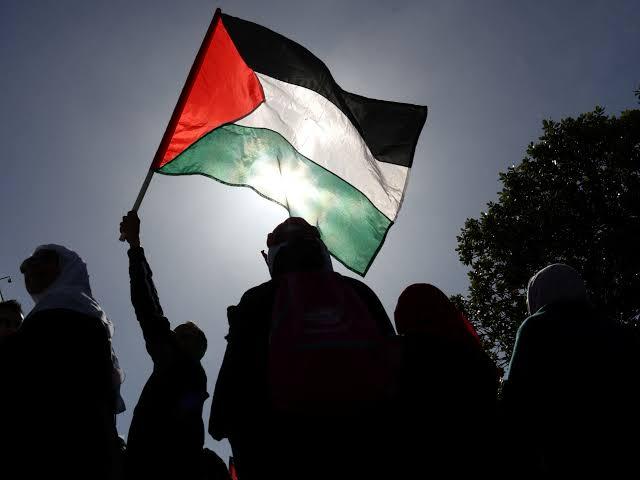Palestinian fighters launched a daring and multi-pronged attack against targets across Israel on Saturday, reminiscent of the events of nearly five decades ago when Egyptian and Syrian forces sought to reclaim territory annexed during the 1967 war. This surprise incursion, which caught Tel Aviv off guard, prompted a severe retaliation from the Israeli occupying forces, primarily targeting civilian structures in Gaza. The toll from this exchange of hostilities has already reached a devastating scale, with the Palestinian Health Ministry reporting at least 232 fatalities, while Israeli authorities estimate the number to be around 200, and these numbers are expected to climb.
The significance of this attack lies not only in its audacity but also in the unprecedented nature of the violence that erupted within Israel itself, unlike anything witnessed since the Palestinian Intifada uprising two decades ago. The day commenced with a barrage of Hamas rockets raining down on various targets in southern Israel, with the alarms reaching as far as Tel Aviv and Beersheba. Shockingly, some of these rockets managed to bypass the Iron Dome defense system, resulting in direct hits on buildings.
However, the rocket barrage served as a smokescreen for a meticulously coordinated multi-pronged infiltration by hundreds of fighters, many of whom breached land security barriers separating Gaza and Israel. Images emerged of fighters employing powered parachutes to cross the border, while a motorboat was filmed approaching Zikim, an Israeli coastal town that houses a military base. This comprehensive attack caught Israel completely off guard, marking one of the most significant intelligence failures in the nation’s history.
Hamas aptly named this audacious operation “Operation Al-Aqsa Flood” and issued a call for “resistance fighters in the West Bank” and those in “Arab and Islamic nations” to join the struggle. The group justified its attack by citing Israel’s escalated aggression against Palestinians in the West Bank, Jerusalem, and the mistreatment of Palestinians in Israeli prisons. They stated their intent to put an end to what they perceived as the occupation’s ongoing crimes.
Israel’s military claimed that Palestinian fighters had managed to infiltrate at least three military installations along the border: the Erez border crossing, the Zikim base, and the Gaza division headquarters at Reim. Hamas released videos showing fighters converging on a burning building near a towering concrete wall, while other images portrayed fighters apparently overrunning a segment of an Israeli military facility, taking cover behind a fortified wall.
Several Israeli military vehicles were captured and later photographed being driven into Gaza, where they were met with jubilant crowds. According to reports, Palestinian fighters have taken prisoners in various locations, including Ofakim and Beeri, two communities located in the Negev desert east of Gaza. Hamas and Islamic Jihad have both claimed to be holding Israeli soldiers captive, with social media accounts affiliated with Hamas posting footage that appears to show these captives being transported into Gaza.
As the day unfolded, Israel’s police chief, Yaacov Shabtai, reported that Israeli forces were engaged in clashes with fighters at 21 different locations, and by 1:30 pm, the military announced that troops were still working to clear communities that had been overrun by Palestinian fighters. Late into Saturday night, the Israeli military asserted that it was still confronting “hundreds” of Palestinian fighters.
Journalists on the ground witnessed attackers gathering around a burning Israeli tank, with others seen driving a commandeered Israeli military Humvee back into Gaza, where they were welcomed by cheering crowds. Videos and unverified images circulating on social media depicted scenes of casualties, including dead civilians, Israeli soldiers, and Palestinian fighters.
Moreover, other images revealed fighters extracting at least two Israeli soldiers from a military vehicle, while bodies were discovered in the streets of Sderot near Gaza, as well as inside vehicles with shattered windshields due to bullet impacts.
On the Israeli side, as night fell in southern Israel, residents were still not given the green light to leave the shelters where they had taken refuge from the fighters since the early hours of the day. Meanwhile, in northern Gaza, hundreds of residents fled their homes, carrying essential supplies, as they watched a high-rise tower engulfed in flames and smoke, the result of an Israeli retaliatory strike.
The situation in Gaza was equally grim, with the destruction of a residential tower in northern Gaza, which contained approximately 100 apartments, according to Gaza’s interior ministry. Mourners in Gaza’s streets carried the bodies of recently fallen fighters, draped in green Hamas flags. Hospitals in Gaza, already strained by shortages of medical supplies and equipment, struggled to cope with the influx of wounded individuals.
Amid this chaos, Doctors Without Borders reported that one strike had hit Gaza’s Indonesian hospital and an ambulance outside Nasser Hospital in southern Gaza, resulting in multiple casualties. The streets in Gaza remained eerily deserted, save for the constant sirens of ambulances rushing to the scenes of air strikes. Adding to the dire situation, Israel’s state-run electricity company cut the power supply to Gaza.
Israeli Prime Minister Benjamin Netanyahu, addressing the nation, declared, “We are at war,” and pledged an unprecedented response, vowing to turn Hamas hideouts into “rubble” in retaliation for the surprise attack. He issued a stark warning to Palestinians living near Hamas sites in Gaza to evacuate, as Israel intended to strike with full force.
Netanyahu stressed that Israel would avenge what he referred to as a “black day,” promising that the Israeli Defense Forces (IDF) would unleash their full might to destroy Hamas’s capabilities. He asserted that Israel would strike Hamas “to the bitter end” and avenge the “black day” that had befallen Israel and its people.
In response, the Israeli army spokesman, Daniel Hagari, condemned Hamas’s actions as a “war crime,” promising that those responsible would “pay the price.”
In conclusion, the audacious attack by Palestinian fighters in “Operation Al-Aqsa Flood” has left both Israel and the Gaza Strip reeling. The unprecedented nature of the incursion, coupled with the heavy toll in terms of lives lost and the destruction wrought, underscores the urgency of the situation. As Israel braces itself for a sustained response, the world watches in apprehension, hoping for an end to the violence and a path towards lasting peace.


